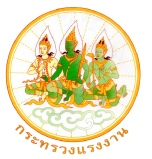During the fall of Qing Dynasty, China faith fell in the hand of foreign imperialists. China lost its territory, and was on the verge of losing its sovereignty. Sun Yat-sen, the Founding Father of Republic of China, led revolutionary army in numerous deadly battles against the imperial rule and succeeded in his 11th attempt to put and end the Qing emperor before he declared the establishment of the fist republic country in Asia, the “Republic of China”.
During the fall of Qing Dynasty, China faith fell in the hand of foreign imperialists. China lost its territory, and was on the verge of losing its sovereignty. Sun Yat-sen, the Founding Father of Republic of China, led revolutionary army in numerous deadly battles against the imperial rule and succeeded in his 11th attempt to put and end the Qing emperor before he declared the establishment of the fist republic country in Asia, the “Republic of China”.
It has been 100 years since the establishment of Republic of China in 1911. During the past 100 years, ROC struggled and went through countless difficulties and changes. In 1938, there was a civil war fought between Koumintang (KMT) and Communist Party of China (CPC). The aftermath of the war saw KMT retreated to Taiwan and established the government of Republic of China on Taiwan Island. This experience came in an exchange of tear and blood on the mainland China and helped ROC to create continued economic miracle in the next 6 decades. It undertook land reform, provided aid for private enterprises, pushed forward 10-points development plans, promoted the process of modernization of its industries, established social security system for laborus, undertook 9-years compulsory education, provided universal health care service, established pension system, and managed to create a currency reserved of US 380,000$ million. Incomer per capital of Taiwanese people was US 18,000$ per year.

After ROC had succeeded economically and politically, by 1987, it began to push forward democratic reform as well as restoring contact and exchange between the two sides of Taiwan Strait. ROC’s democratic reform began with the lift of Martial Law Decree, permission to form new political parties, the abolishment of national emergency period, establishment of a public memorial and apology to the 28 February Holocaust and “white terror” incidents, and the push for total re-election of the National Assembly as well as the direct election of the president. The presidential elections in 2000 and 2008 also marked the change of ROC government for the first and the second times in Taiwanese political history. ROC therefore is not only the first republic country in Asia but also one of the most successful Asian countries and Chinese society under a democratic regime of government.

As for other aspects of contact and exchange on Taiwan Strait, it has been 23 years since ROC government first gave permission for Taiwanese to travel to visit their relatives in the mainland China in 1957. Even though cross-strait relations was so smooth, from 2008 onward ROC President Ma Ying-jeou has relied on “the 1992 Consensus on One China Principle, which the two sides of Taiwan Strait have their own individual definitions of it”, as the basis to maintain political status quo on Taiwan Strait, that there would be “no reunification, no independence, and no war”, and to restore constructive dialogue with the mainland China. Under a short period of 2 years and 7 months, cross-strait relations have remarkably improved. There have been 6 dialogues held via the semi-organizations to push forward the agreement for the direct flights between the tow countries, and the allowance for the entrance of Chinese tourists and students to travel and study in Taiwan for example. In addition, 15 agreements were made on Taiwan Strait, including the Economic Cooperation Framework Agreement (ECFA). These do not only reduce tension in Taiwan Strait but also improve the security of people and property of Taiwan Strait as President Ma Ying-jeou Taiwan Strait said that the once hostile cross-strait relations has already been transformed into a foundation to build peace for the future.
Peace promotion on Taiwan Strait receives praises from not only foreign media but also from Taiwanese citizens. According to the recent survey on the perspective of Taiwanese people on various national developments in the previous year done by Taiwanese media, 67 percent are satisfied with cross-strait relations. They see that relationships between the mainland China and Taiwan has improved. The resumption of contact on Taiwan Strait starts to show a glimpse of benefits but what people want to see even more is the “cross-strait peace”.

For this reason, on the 100th Anniversary of the Republic of China, President Ma Ying-jeou in his New Year’s address entitled “Building up Taiwan, Invigorating Chinese Heritage” specifies cross-strait relation as “a 100 years peace”. He reiterated that the two side of Taiwan Strait should forget about their conflicts, and focus to work to develop lasting peace on Taiwan Strait, which is common desire of the people on both side of Taiwan Strait. Taiwan Strait’s authorities should use compromise as a way to ease conflict and turn to cooperation rather than confrontation. They should ensure that people happiness comes first and to begin the new century with 100 year peace.




